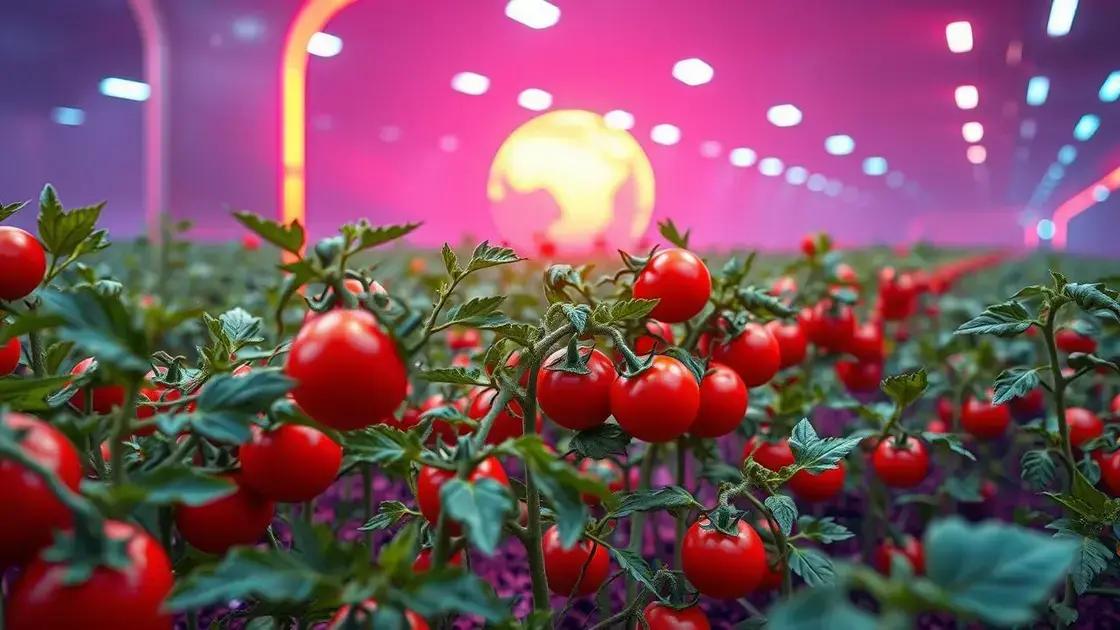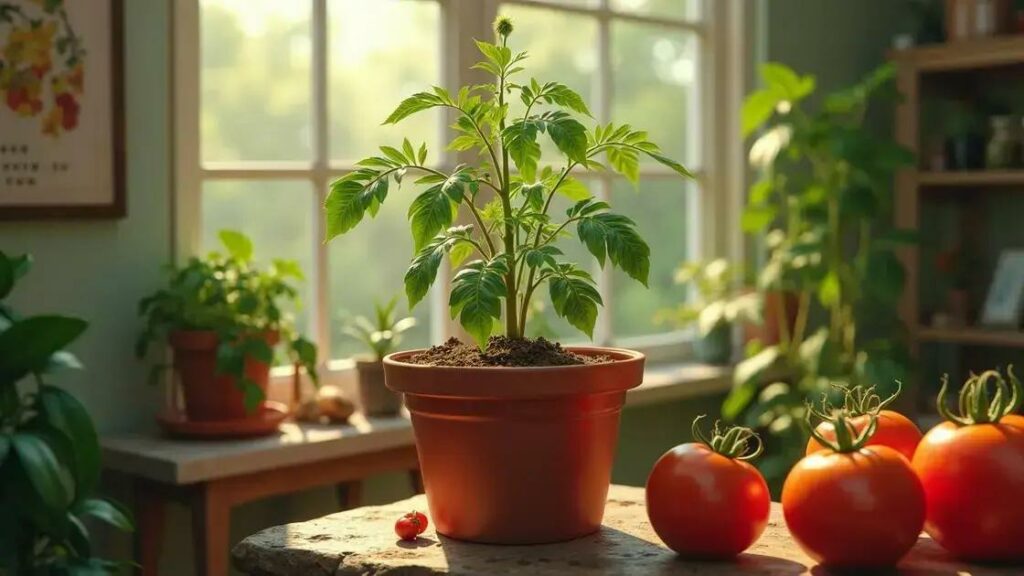How to care for a potted tomato plant can be a rewarding journey, especially if you’re aiming for delicious home-grown tomatoes. Success lies in understanding the plant’s needs and avoiding common pitfalls. Interested in learning more? These tips will guide you on your way to healthy, fruitful tomato plants.
Table of Contents
ToggleWatering techniques for healthy growth
Watering techniques for healthy growth are crucial for ensuring that your potted tomato plant thrives. Proper watering methods promote optimal growth and fruit production, while inadequate watering can lead to disease or reduced yields.
Understanding your plant’s needs
Tomato plants require consistent moisture but do not tolerate soggy soil. Assess the moisture levels and adjust your watering techniques based on various factors:
- Weather conditions – Hot and dry weather may require more frequent watering.
- Plant size – Larger plants consume more water.
- Soil type – Sandy soils drain faster than clay soils.
Best watering practices
Here are some effective watering techniques to ensure healthy growth for your potted tomato plant:
- Water deeply but infrequently: Watering less often encourages deep root growth. Aim to water the plant thoroughly once every 3-4 days, depending on conditions.
- Check the soil moisture: Stick your finger about 1-2 inches into the soil. If it feels dry, it’s time to water.
- Watering time: Early morning is the best time to water; it allows moisture to absorb before the heat of the day.
Signs of overwatering and underwatering
Maintaining a proper balance is key. Look for these signs:
| Watering Issue | Signs |
|---|---|
| Overwatering | Yellow leaves, wilting despite wet soil, root rot. |
| Underwatering | Shriveled leaves, dry soil, drooping plants. |
For additional tips on how to enhance your indoor gardening practices, consider exploring indoor gardening techniques.
Maintaining consistent moisture
To prevent fluctuations in moisture levels:
- Use mulch around your potted plant to help retain soil moisture.
- Consider using self-watering containers or systems if you are frequently away.
- Monitor the effects of rain if your potted tomato plant is outdoors; you may need to adjust your schedule accordingly.
Implementing these watering techniques ensures that your potted tomato plant receives the care it needs for healthy growth and bountiful harvests.
Nutrient requirements for optimal tomato plants

Nutrient requirements for optimal tomato plants are essential for achieving vigorous growth and high fruit yields. Ensuring that your potted tomato plant receives the right nutrients at the right time is key to its overall health.
Essential nutrients tomato plants need
Tomatoes require a balance of macro and micronutrients. Here’s a breakdown of what your plants need:
- Nitrogen: Promotes lush foliage and overall plant health.
- Phosphorus: Supports root development and flowering.
- Potassium: Enhances fruit size and quality.
- Calcium: Prevents blossom end rot and strengthens cell walls.
- Magnesium: Vital for chlorophyll production and photosynthesis.
Choosing the right fertilizer
Selecting an appropriate fertilizer is key to meeting your potted tomato plant’s nutrient requirements. Here are some guidelines:
- Balanced fertilizers: Choose a product with an N-P-K ratio of 5-10-10 or similar, which provides a good balance for growth.
- Slow-release options: Consider using slow-release fertilizers for steady nutrient supply over time.
- Organic choices: Look for organic fertilizers like compost, bone meal, or fish emulsion for added benefits.
Signs of nutrient deficiency
Being observant can help you address nutrient deficiencies before they affect your plants seriously:
| Nutrient Deficiency | Signs to Look For |
|---|---|
| Nitrogen | Yellowing of older leaves, stunted growth. |
| Phosphorus | Purplish leaves, delayed flowering. |
| Potassium | Brown leaf edges, weak stems. |
| Calcium | Blossom end rot, weak fruit development. |
To learn more about how to effectively manage nutrient levels while caring for your plants, consider exploring indoor gardening techniques.
Proper feeding schedule
A well-planned feeding schedule helps maximize nutrient absorption:
- Start feeding your tomatoes when they are about 6-8 inches tall.
- Feed every 4-6 weeks throughout the growing season.
- Reduce feeding frequency as the plant starts to produce fruit.
By understanding the nutrient requirements for optimal tomato plants, you can ensure that your potted tomato plant flourishes and provides a bountiful harvest.
Common issues in potted tomato care and solutions
Common issues in potted tomato care and solutions are crucial for maintaining healthy plants. Recognizing and addressing these challenges early can safeguard your tomato plants from long-term damage.
Pests and diseases
Potted tomato plants can fall prey to several pests and diseases. Here’s how to identify and solve these problems:
- Aphids: Small, green bugs that suck sap from leaves. Solution: Spray with insecticidal soap or a strong water stream.
- Spider mites: Tiny web-spinning pests usually found on the undersides of leaves. Solution: Increase humidity and use neem oil.
- Blossom end rot: A condition caused by calcium deficiency, leading to dark spots on fruit ends. Solution: Ensure consistent watering and use calcium supplements.
Watering issues
Too much or too little water can severely affect potted tomato plants. Here’s how to manage watering effectively:
- Symptoms of overwatering: Yellowing leaves and root rot.
- Symptoms of underwatering: Wilting and dry soil.
- Solution: Always check the soil moisture before watering; keep the soil evenly moist but not soggy.
Lighting conditions
Tomatoes require ample sunlight for optimal growth. Be aware of these signs and solutions:
| Light Issue | Signs | Solution |
|---|---|---|
| Insufficient light | Stunted growth, leggy plants | Move pots to a sunnier location or use grow lights. |
| Excessive heat | Leaf curling, wilting | Provide shade during the hottest part of the day. |
For more insights into overcoming common gardening challenges, consider exploring indoor gardening techniques.
Soil and nutrient issues
Improper soil conditions can hinder plant growth. Here are some helpful tips:
- Use well-draining potting mix to prevent waterlogging.
- Incorporate organic fertilizers to supply essential nutrients.
- Regularly check pH levels, aiming for slightly acidic (6.0-6.8).
By understanding and addressing these common issues in potted tomato care, you can promote healthy growth and a successful harvest from your plants.
In conclusion
Caring for a potted tomato plant is a rewarding endeavor that requires attention to various factors, including watering techniques, nutrient needs, and problem-solving for common issues. By implementing these strategies, you can ensure the health and productivity of your tomato plants. Remember to monitor the conditions regularly and adjust your care as necessary. For more insights and tips on enhancing your indoor garden, explore additional resources.

